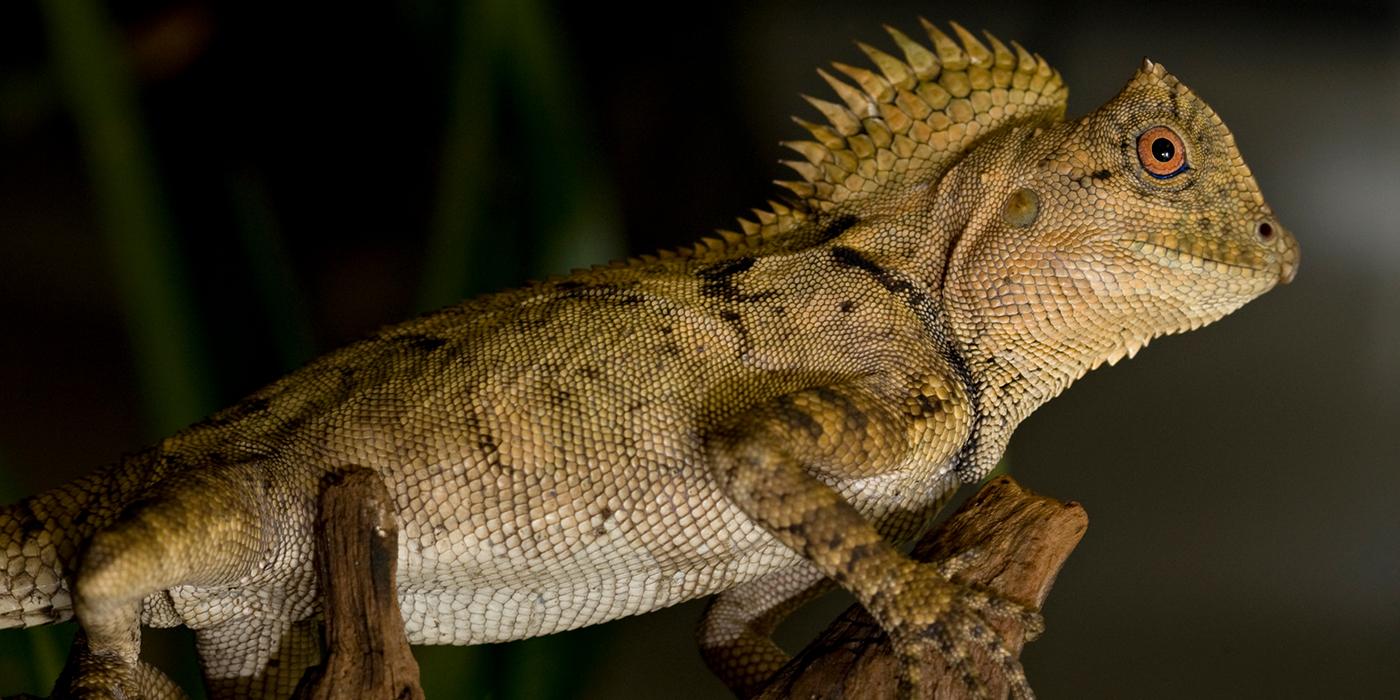Physical Description
Chameleon forest dragons have short, laterally compressed bodies with pronounced vertebral keels. They are generally green, though Sumatran specimens like those at the Smithsonian's National Zoo are brown.
Forest dragons have orange and tan markings, and the skin around a male's eyes is bright blue. Their heads are short with a strong, triangular profile and spines directly above the eyes. Like most lizards, they have visible ear openings and moveable eyelids. Their long, thin limbs are equipped with five, clawed digits, and their hind limbs are slightly longer than their front limbs.
Despite their name, chameleon forest dragons are not true chameleons. They can change color to blend into their habitat, but this ability is not as pronounced as in true chameleons. Forest dragons can appear in a number of different shades and show brighter colors as a warning display when threatened.
Size
Native Habitat
Lifespan
Food/Eating Habits
These lizards are primarily insectivorous, meaning they eat insects. They feed on a variety of invertebrates found in tropical rainforests.
At the Smithsonian's National Zoo, chameleon forest dragons eat earthworms and crickets.
Reproduction and Development
Conservation Efforts
The chameleon forest dragon's conservation status has not been formally assessed, but its population is likely in decline given the relatively small and specific area they inhabit. This area is vulnerable to habitat loss due to logging and clearing for agriculture.
This species is also increasingly popular as a pet, and it is thought that wild captures for trade also impact the population.
Help this Species
Reduce, reuse and recycle — in that order! Cut back on single-use goods, and find creative ways to reuse products at the end of their life cycle. Choose recycling over trash when possible.
Share the story of this animal with others. Simply raising awareness about this species can contribute to its overall protection.
Smithsonian's National Zoo and Conservation Biology Institute. (n.d.). Chameleon forest dragon. Retrieved October 18, 2025, from https://nationalzoo.si.edu/animals/chameleon-forest-dragon
Animal News

7 Spooktacular Animal Facts for Halloween ›

Meet the Orangutans Living at the Smithsonian’s National Zoo ›



